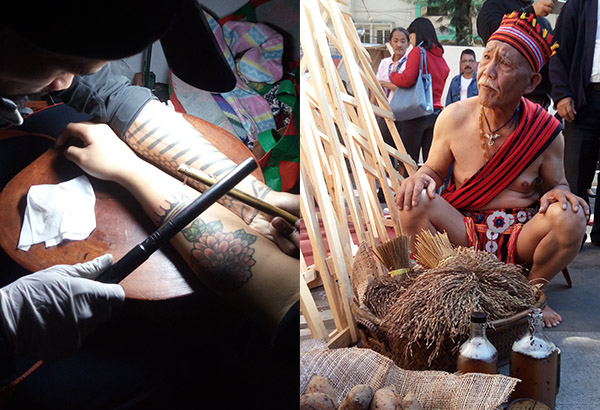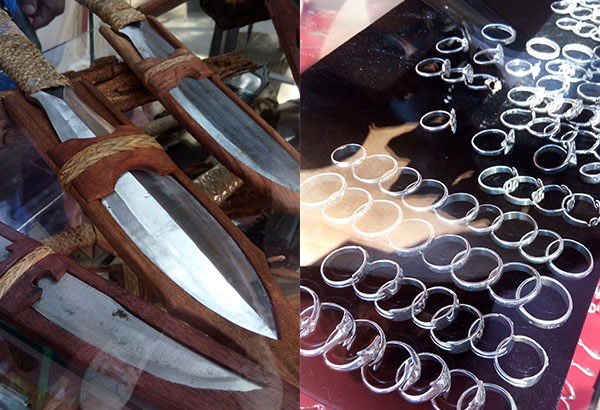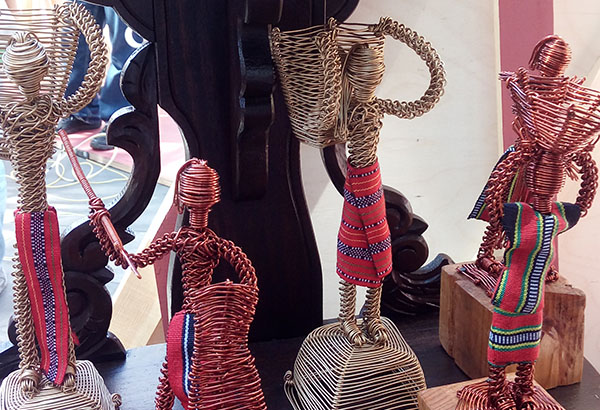Love art? Baguio City offers 4 must-see creative hubs

Here is a list of creative industries in Baguio that we should never forget to explore and keep patronizing. Philstar.com/Glaiza Lee
BAGUIO CITY — When the temperature starts to rise and the heat becomes unbearable, most people think about escaping the city and finding alternative places to cool off. At the top of their travel list during dry season would be Baguio City.
Undeniably one of the most frequently visited places in the country, Baguio City has been known as the “Summer Capital of the Philippines.” Apart from its beautiful panoramas filled with rustic charm, its cool weather draws people to the city.
Located in the Mountain Province, nestled on the upland Cordillera Region, its temperature ranges from 21 to 25 degrees during the dry season, and 8 to 21 degrees during wet season.
But there is another reason to visit this northern city - its creative industry. Every corner imbibes its rich culture and expressive artistry. No wonder it has been included in the United Nations Educational, Scientific and Cultural Organization’s (UNESCO) Creative Cities Network (under the Crafts and Folk Arts category) since last year. It was the first city in the Philippines to be included in the list, and fifth in Southeast Asia.
Driven by the different tourism stakeholders, the campaign for the UNESCO Creative Cities Network has been aimed to sustain economic growth within the city, while preserving and promoting its culture and creative industries.
For decades, Baguio City has become a hotspot of arts and culture in the country. Its Cordilleran culture and identity has always been an important component of its sustainable tourism.
“Baguio is, and has always been, a Creative City. This prestigious designation is not only an honor for the city alone, but a triumph for the Philippines and the creative communities throughout the country. Given's Baguio's unparalleled cultural heritage, and coupled with strong political will, we strongly believe that Baguio will cement the future of sustainable development in the country,” said Philippine National Commission for UNESCO Secretary-General Lila Ramos Shahani.
She continued: “As the first UNESCO-designated Creative City in the Philippines, what Baguio initiates and implements will surely be seen as a benchmark for other cities vying to be part of the Network.”
Through the years, there has been a decline in the creative industries. Crafts and folk arts have been facing the challenges of continuity and sustainability because of the breakdown in the inter-generational transfer of knowledge and skills, lack of institutional support, and the need to improve the quality of the crafts to meet the discriminating preferences of both the local and international markets.
With the establishment of the Baguio Creative Hub in Malcolm Square (formerly People's Park), Baguio seeks to maximize the economic and artistic potentials of its creative sectors.
With its pavilion-like structures with artistically executed design, the creative hub in Malcolm Square was set up as a temporary exhibition showcase featuring the best artworks, crafts, folk arts, artisanal items and other products of Baguio and the Cordilleras.
Positioning itself as a creative city, Baguio has a lot to offer when it comes to its crafts and folk arts. Here, we list down the creative industries in Baguio that we should never forget to explore and keep patronizing.
1. Tattoo art

A local artist applying a local design. Philstar.com/Glaiza Lee
The art of tattooing has grown and continued to develop due to the robust tourism in the city. For traditional Cordillerans, a tattoo is a symbol of bravery and courage, usually earned through winning battles.
Inspired by the Cordilleran traditions, this ancient art enjoys its new lease. Partially thanks to Apo Maria Oggay, also known as Apo Whang-od, there has been a renewed interest in this ancient art. Whang-od is known for her "batok," a traditional technique of tattooing where the tattoo artist uses ink made from a mixture of charcoal and water, and is tapped into the skin using the thorn of a lemon or pomelo tree.
2. Metal crafts

Baguio silver craft. Philstar.com/Glaiza Lee
With the birth of mining in the region comes metal crafts. In the late 1800s to 1900s, there has been a thriving gold and silver craft in Baguio. Silver craft was introduced by the congregation of the sisters of the Immaculate Heart of Mary, with the St. Louis Center Silver Shop, owned by the missionaries, pioneering the industry. Today, there are several shops selling silver works.
3. Weaving

Dolls depicting Ifugao tribesmen. Philstar.com/Glaiza Lee
The hand-woven textiles of the Cordillera tell stories of identity, economic and social change. The weaving industry in Baguio has been known for its native designs, intricate handwork, and high quality.
One of the pioneers in the weaving industry of Baguio was Narda Capuyan, owner of the popular Narda's Handwoven Arts and Crafts. She has championed the Cordillera Ikat, even introducing innovative designs to suit contemporary style.
Take time to visit the Easter Weaving Room to see the weavers in action. Started as a little classroom of Easter School where weaving classes were held, the Easter Weaving Room has preserved the weaving traditions in Baguio, creating hand-woven products such as place mats, table napkins, tablecloths, and even bags and clothes.
4. Woodcarving

Woodwork by Baguio natives. Philstar.com/Glaiza Lee
Local history has it that the wooodcarving industry can be traced back in the 1970s. Based on a book by Lambrecht published in 1981, the woodcarving was linked to Ifugao religion, far different from its ornamentation purpose nowadays.
After World War II, the demand for wooden sculptures and carving increased. Along with “buybuy” (soft brooms) and strawberries, wood carving was on the top of the shopping list of local tourists who visited Baguio in the 50s.
Want that barrel man? Head to Asin, a barangay located in the southwestern outskirts of the city, and find shops after shops selling wood carving made by Hapao woodcarvers.



















